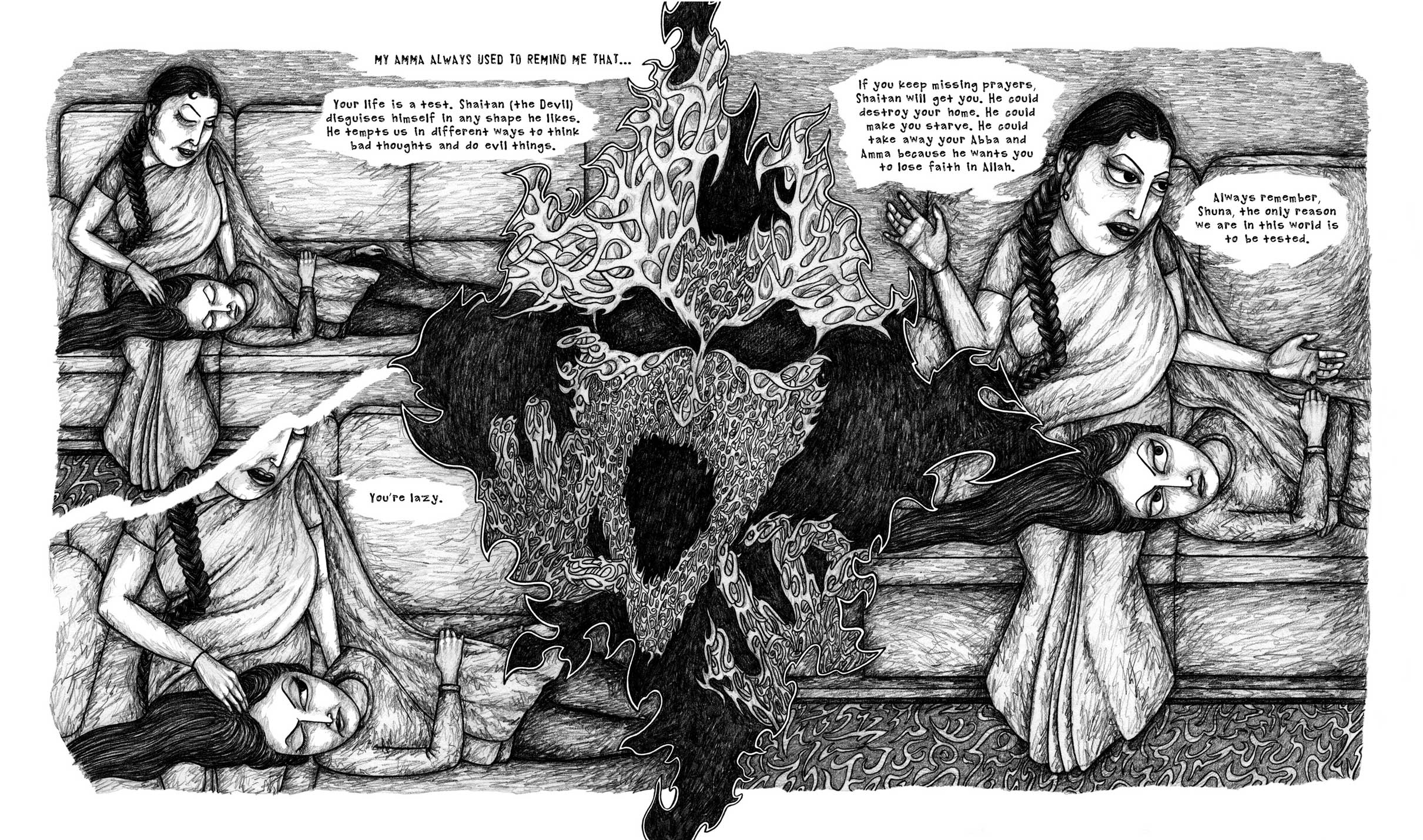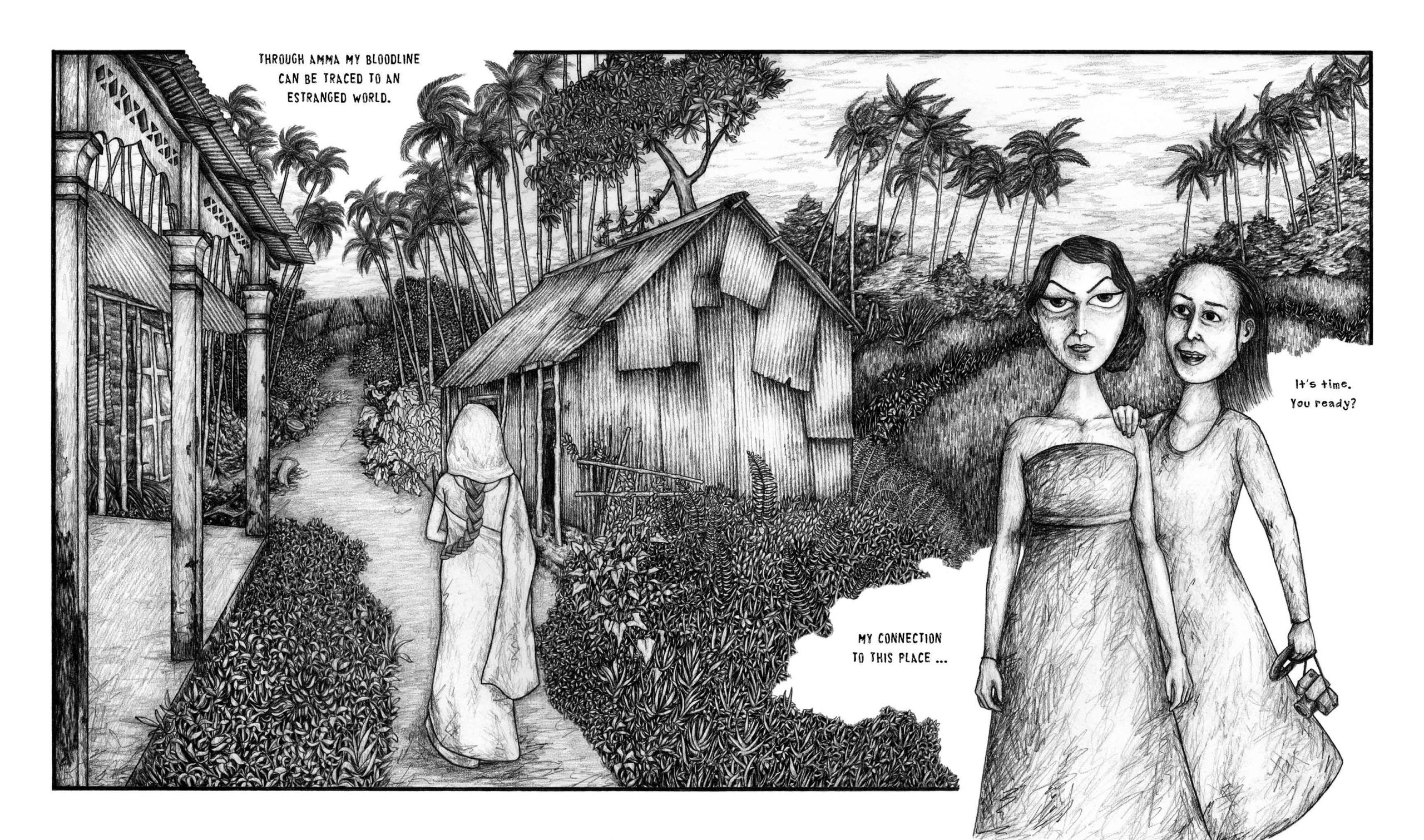Femi-9
The original interview before it was translated to French for the magazine Femi-9, published in June 2023.
What made you want to make this album, from the first drawings to the release?
I had a fascination in personal narrative shared by women, by minority voices and those who had a religious upbringing. I connected with these stories. The authors used their stories to reflect upon society or history, or they just allowed readers to walk through their memories to find their own truth.
Eventually, I turned the lens on myself and reflected on my own story. In many ways I conformed to the stereotypes and in many ways I did not. I wanted to use my story to add more complexity to the two-dimensional depiction of Muslim women in Britain. I decided to share my memories through the cartoon body of Shuna.
Drawing the memories not only allowed me to reflect on my identity, the characters contained within them and our relationship to culture and religion, but also the notion of autobiography - when does memory become imagination and how much of your memory can you keep for yourself?
What are the main difficulties that miscegenation represents for you?
The difficulties of being a mixed raced child… every child has difficulties of one sort or another. Anything that makes you different will cause difficulty.
As a mixed-race child, born in the early 90s, who grew up in a little town, I feel the difficulty came from people’s ignorance and treatment of us, from both sides. Sometimes it was little nuances, being left out or a sly comment, sometimes people were explicit and made no attempts to hide their disdain for us. Perhaps this is what makes Shuna a little bit more desperate to belong and seek approval than other children. But eventually, you realise there is nothing anyone can say that you’ve never heard before and you don’t need to give them a listening ear.
I learned to love and be grateful for every part of me. I see my Mongrel-ness as a great strength and privilege. In the in-between spaces is where I thrive.
What are your ideas about what helps to better accept one's differences and what makes it a strength?
Exactly that, make it a strength. Evolve your perception. In-betweenness has become something I celebrate and run towards: the medium of comics, my style which has evolved from Western surrealism and Islamic miniatures, to my interest in the physical world and the metaphysical realm.
What helps is escaping narrow social bubbles and echo chambers, meeting new people and seeking new experiences, and then you realise we’re all different. And it’s useful to recognise and appreciate the many facets that form our identity. No one label will ever capture the complexity of our identity.
Could you please comment on 2 or 3 boards that stand out for you (chosen by you)?
This spread (top) is really important to me. To me, it speaks of the intimate mother-daughter relationship. Amma strokes Shuna's hair, comforting her, whilst warning her about the Shaitan.
I usually draw from memory, not photographs because of my interest in memory, the truth within them which does not conform to an objective truth. But in this spread, I really wanted to capture the entry into my mother’s village giving reality promonance instead of my memory of it. Perhaps this is because my Mother and the villagers deserve more ownership of this image than I do.


